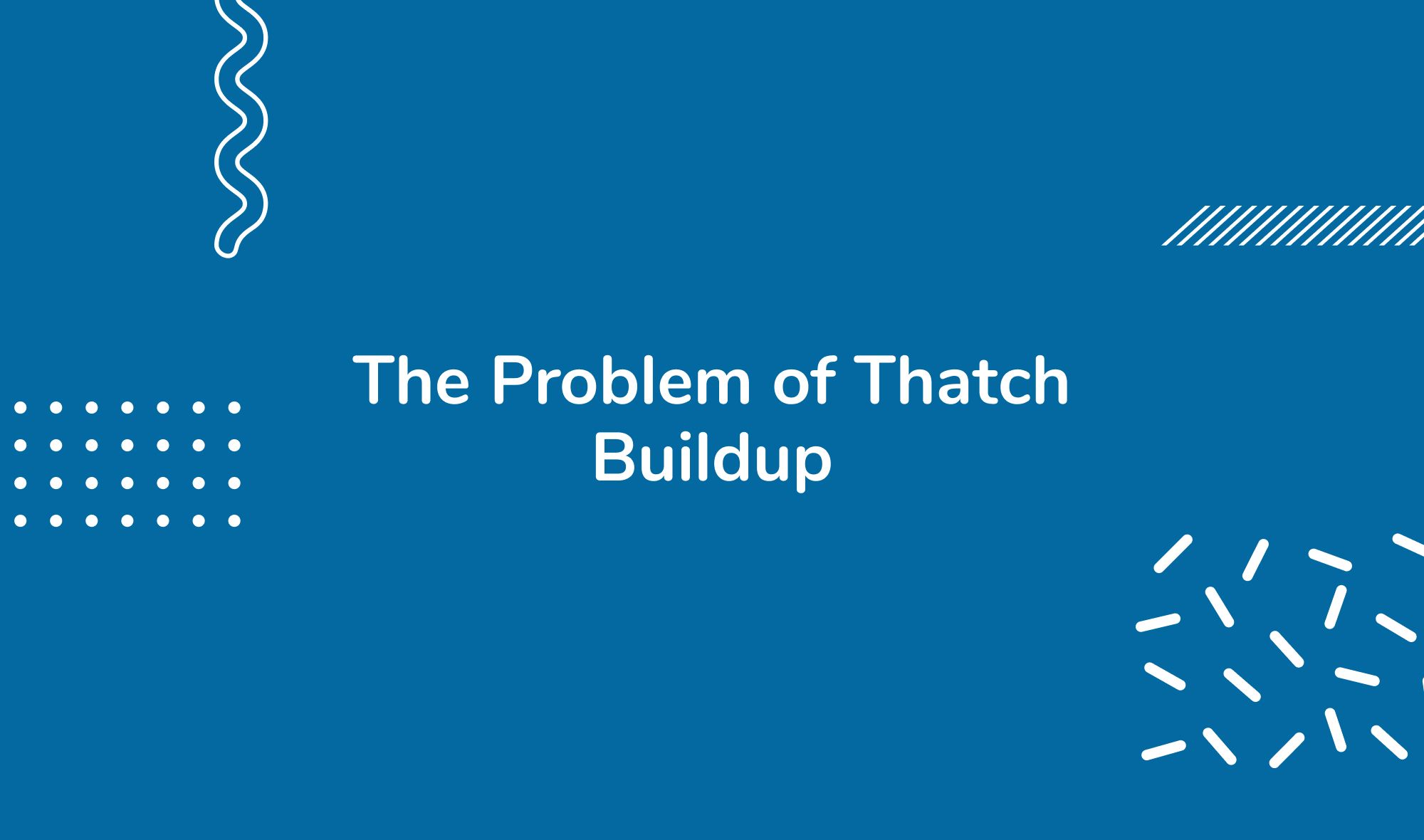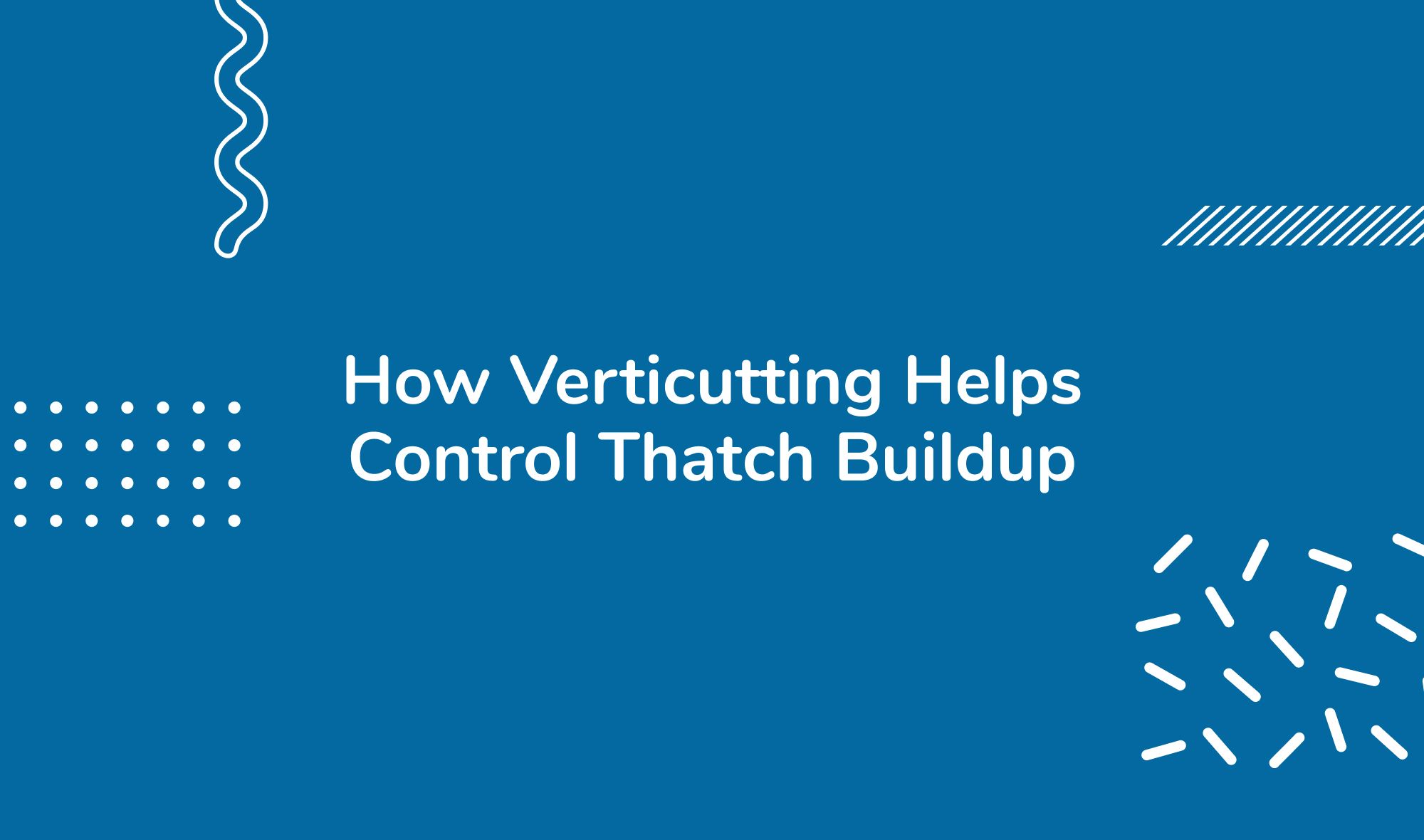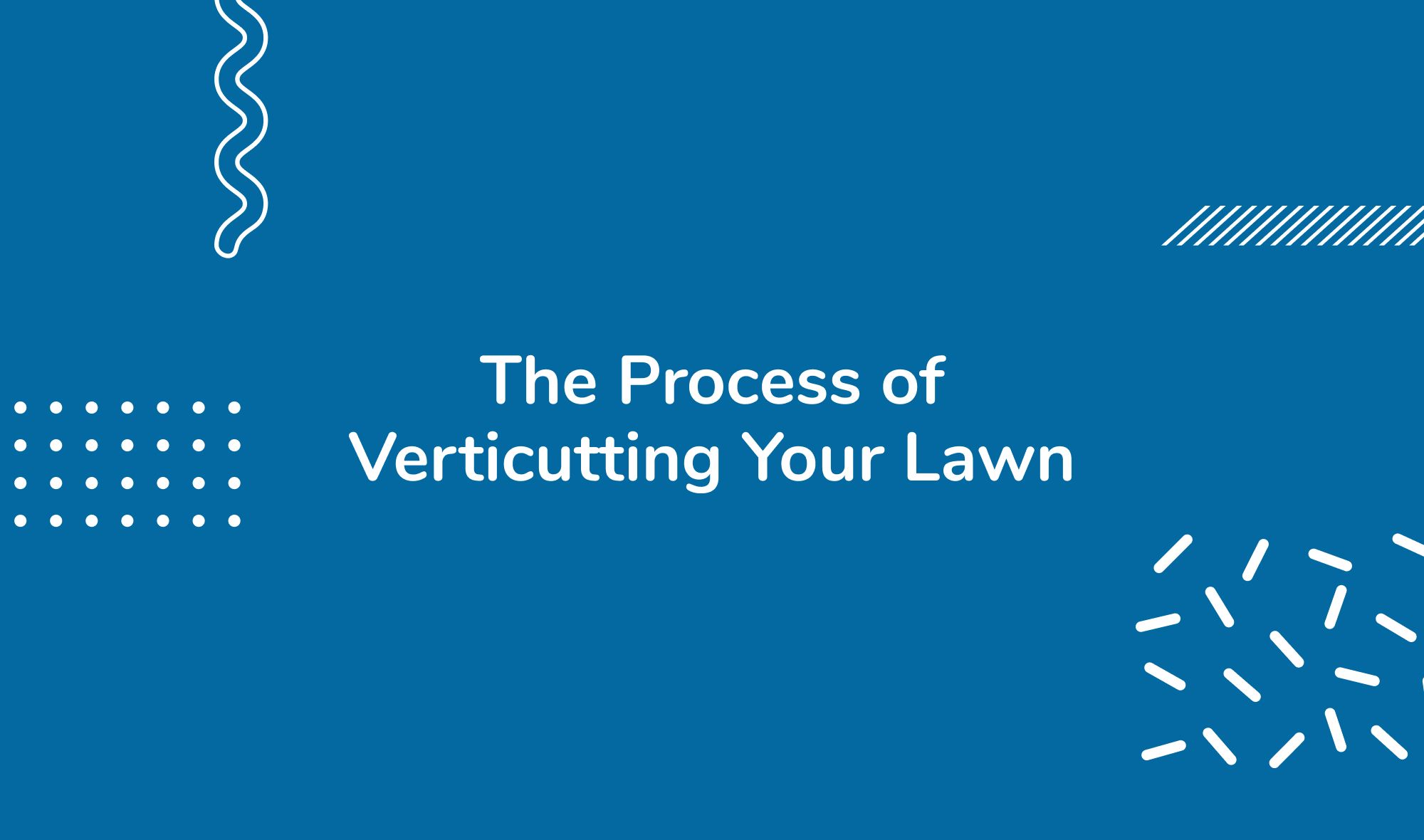Mastering the Art of Verticutting: Essential Tips for a Healthier Lawn
By HeyHome • June 6, 2023
Key Takeaways
- Verticutting is an effective technique for managing thatch buildup in your lawn, promoting healthier grass growth.
- The process involves the use of a special machine, such as a verticutter or a vertical mower.
- Verticutting differs from vertical mowing and is generally used for lawns with severe thatch problems.
- Grass clippings post-verticutting can be effectively managed through composting, mulching, or bagging.
- Verticutting your lawn before seeding can lead to optimal results.

Have you ever looked out your window at your lawn and felt a pang of disappointment? Despite your best efforts with your trusty lawn mower, does your grass just not have the vibrant, healthy look you see in those perfectly manicured lawns across your neighborhood? It might not be your mowing skills or the quality of your grass that's the issue; it could be a hidden problem lurking beneath the surface. The culprit could be a dense layer of thatch buildup that's suffocating your lawn.
That's where the art of verticutting comes in. Verticutting is a lawn care process that goes a step beyond regular mowing, diving deeper to address the root cause of many common lawn health issues. By removing excess thatch and allowing more air, nutrients, and moisture to reach the grass roots, verticutting can rejuvenate a tired lawn and set the stage for healthier, more vibrant grass growth.
If you want a lawn that turns heads and elevates your yard to the next level, then mastering verticutting might just be your secret weapon. In this guide, we'll explain the process of verticutting, its many benefits, and how you can apply it to your own lawn. By the end of it, you'll know exactly how to breathe new life into your turf and say goodbye to that hidden layer of thatch for good.
Stick with us and prepare to see your lawn in a whole new light. After all, lawn care is not just about keeping the grass short, it's about promoting overall health and creating a lawn that's more than just a patch of green—it's a point of pride.
Join our newsletter
Stay on top of the latest in landscaping and lawn care with one valuable tip right in your inbox every Saturday morning.
What is Verticutting?
Verticutting, also known as vertical mowing, is a specialized lawn care process that involves cutting into the turf to remove thatch buildup. Thatch is a layer of dead stems, grass clippings, and other organic matter that accumulates between the soil and the grass. A thin layer of thatch can be beneficial, providing insulation and protection for grass roots. However, when the thatch layer becomes too thick—half an inch or more—it can prevent moisture, air, and nutrients from reaching the soil and grass roots. This is when verticutting becomes necessary.
Verticutting uses a machine equipped with many vertical blades, designed to slice into the thatch without severely damaging the healthy grass. As these blades move across your lawn, they lift the thatch layer to the surface where it can be easily raked and removed.
Verticutting vs. Regular Lawn Mowing
While both verticutting and regular mowing involve cutting grass, they serve different purposes and are used at different times during the growing season.
Regular mowing with a lawn mower is part of routine lawn maintenance. It helps keep your grass at a desirable height, encouraging healthy growth and a neat appearance. It does not typically address the problem of thatch buildup.
Verticutting, on the other hand, is typically done less frequently, often just once per growing season, and serves a different purpose. This procedure is more labor-intensive and disruptive to the lawn as it targets the thatch layer beneath the grass.
In short, while regular mowing maintains the lawn's appearance, verticutting is about maintaining and improving the lawn's health by controlling thatch and promoting better soil contact for the grass roots. This difference is crucial to understanding when and why you might choose to verticut your lawn.
By understanding the roles of both processes, you can use them effectively to keep your lawn looking its best and functioning healthily. In the next section, we will delve deeper into the problem of thatch buildup, so you can identify when verticutting might be necessary for your lawn.
The Problem of Thatch Buildup

Before we discuss the issue of thatch buildup, let's first understand what thatch is. Thatch is a complex layer made up of dead stems, grass clippings, and other organic debris that accumulates over time between the surface of the soil and the living grass on your lawn. This dead layer doesn't decompose as quickly as the grass above it, leading to a buildup of dead mass that can cause several problems if not managed.
While a thin layer of thatch can be beneficial—offering insulation to grass roots and helping to conserve moisture—too much thatch can hinder the health of your lawn grass. If your lawn has an excess thatch layer of half an inch or more, it can form a barrier, preventing vital nutrients, water, and air from reaching the grass roots. This could potentially suffocate your lawn, leaving it looking yellowed and unhealthy.
Moreover, an excess thatch layer can create an environment conducive to pests and diseases, can lead to shallow root systems, and can result in uneven lawns which can affect the efficiency of lawn mowers and sprinkler heads. In the summer, a thick thatch layer can trap heat, putting further stress on your lawn.
How Verticutting Helps Control Thatch Buildup

That's where verticutting steps in. Verticutting is a technique that effectively removes thatch buildup. It involves using a verticutting machine or a vertical mower, which has many vertical blades designed to cut into the turf and pull up the thatch. After verticutting, the lifted thatch can be easily collected in leaf bags or raked away.
By removing the dead layer of thatch, verticutting allows your lawn to breathe again. It opens up the soil, giving the roots better contact with air, nutrients, and moisture. It also aids in maintaining a flat, even surface, making subsequent lawn care tasks like mowing and watering more efficient.
If your lawn is suffering due to too much thatch, consider verticutting as an effective solution. Keep in mind, verticutting is best done during the growing season when the grass can recover quickly. By controlling thatch through verticutting, you're giving your lawn a fresh start, paving the way for lush, healthy grass growth.
In the following sections, we'll guide you through the steps to effectively verticut your lawn, so you can achieve a healthier lawn that not only looks good but is genuinely thriving.
Essential Tools for Verticutting: Introducing the Verticutter and Vertical Mower

To get started with verticutting, you'll need the right tools. The most essential pieces of equipment are the verticutter and the vertical mower. Both these machines are specifically designed to penetrate the thatch layer and bring it to the surface where it can be easily removed.
The Verticutter
A verticutter, sometimes known as a dethatcher, is a machine equipped with many vertical blades. These blades slice into the turf and mechanically lift the thatch to the surface. Verticutters can have adjustable blade heights to control how deeply they cut into the thatch, which is beneficial for lawns with varying degrees of thatch buildup.
Join our newsletter
Stay ahead of the curve in all things outdoor.
Get the inside scoop on the latest landscaping, lawn care, and fencing trends with 1 actionable tip every Saturday morning.
The Vertical Mower
A vertical mower, as the name suggests, is a mower equipped with vertical blades. It operates similarly to a verticutter, cutting into the turf to remove the thatch. The primary difference is that vertical mowers typically have wider spacing between their blades, making them more suitable for larger lawns with moderate thatch issues. They might not be as effective for lawns with severe thatch buildup.
Choosing the Right Tool for Your Lawn

Selecting the right tool will depend on your lawn's specific needs. Consider the size of your lawn, the severity of the thatch buildup, and the kind of grass you have.
For smaller lawns or for lawns with severe thatch issues, a verticutter may be the best choice. Its closely spaced blades can cut more effectively into heavy thatch, providing thorough thatch removal.
On the other hand, for larger lawns with moderate thatch issues, a vertical mower might be more efficient. It covers a larger area in less time due to its wider spacing of blades.
In any case, remember that both these tools should be used with care. Verticutting can be stressful for your lawn, and it's important to give your grass time to recover afterwards. Remember that the goal is to remove thatch, not to damage the healthy grass and its root system.
In the next section, we'll walk you through the step-by-step process of how to verticut your lawn, ensuring you can make the most out of your chosen tool and achieve a healthier lawn.
The Process of Verticutting Your Lawn

Verticutting might seem daunting at first, but with the right tools and a clear understanding of the process, you can do it yourself. Here's a step-by-step guide to help you verticut your lawn and control thatch buildup.
Step 1: Assess Your Lawn
Before you begin, take a thorough look at your lawn. Determine the extent of the thatch problem. You can do this by cutting out a small, one-inch deep section of your lawn and examining it. If you see a layer of thatch greater than half an inch, your lawn could benefit from verticutting.
Step 2: Prepare Your Lawn
Mow your lawn at the lowest setting possible. This will make the verticutting process easier by reducing the amount of grass the machine has to work through. Make sure to collect and remove all the grass clippings to expose the thatch layer.
Step 3: Set Up Your Verticutter or Vertical Mower
Adjust the blades on your machine to cut into the thatch layer, not into the soil. The blades should penetrate the thatch but shouldn't tear up the grass roots or soil.
Step 4: Start Verticutting
Begin verticutting in one corner of your lawn, working your way across in straight lines. To ensure thorough thatch removal, you may need to make multiple passes. You might want to do this in a pattern, similar to mowing—verticut in one direction, then cross over and verticut in a perpendicular direction.
Step 5: Clean Up
After verticutting, you'll have a significant amount of thatch and dead grass on the surface of your lawn. Rake up this debris and dispose of it properly. Leaving it on your lawn can suffocate your grass and lead to other problems.
Step 6: Water and Fertilize
Once you've verticut and cleaned up your lawn, it's time to water and fertilize. This will help your lawn recover from the stress of verticutting and promote healthy grass growth.
Remember that verticutting is a strenuous process, so it's important to give your lawn plenty of time to recover afterwards. Verticutting should ideally be done during the growing season when your grass can bounce back quickly.
In the following sections, we will explore other aspects of lawn care that can complement verticutting, like overseeding and aerating, to ensure you're equipped with all the knowledge you need for a healthier lawn.
Verticutting and Lawn Health: Why It's Crucial

Now that you understand what verticutting is and how to do it, let's explore why it's so important for your lawn's health.
Improved Nutrient Access
One of the key benefits of verticutting is that it allows your lawn to better absorb nutrients. An excess thatch layer can act as a barrier, preventing essential nutrients from reaching the soil and the grass roots. Once thatch is removed, nutrients can easily penetrate the soil, providing your lawn with the food it needs to grow lush and healthy.
Enhanced Water Access
Water is a crucial element for your lawn, and verticutting helps ensure that your lawn gets the water it needs. By removing thatch, you are preventing water runoff and ensuring that more water is absorbed into the soil. This means your lawn will require less watering, saving you time and potentially reducing your water bill.
Better Air Circulation
Grass, like any other plant, needs air—specifically, oxygen—to thrive. An excess thatch layer can suffocate your lawn, preventing air from reaching the soil and the grass roots. By verticutting, you're removing this barrier and allowing your lawn to breathe.
Prevents Lawn Diseases and Pest Infestations
Verticutting also helps prevent lawn diseases and pest infestations. Excess thatch can create a damp, sheltered environment that pests and disease-causing organisms love. Removing this layer through verticutting can help keep your lawn pest-free and healthy.
Encourages Healthy Grass Growth
By removing the dead layer of thatch, verticutting stimulates healthy grass growth. It can help expose new grass shoots to more sunlight, promoting better photosynthesis and leading to a thicker, greener lawn.
Overall Lawn Health
In conclusion, verticutting can significantly enhance the overall health of your lawn. By creating a better environment for grass roots, controlling thatch, and allowing better access to nutrients, water, and air, verticutting sets the stage for a vibrant, healthier lawn.
So, if you're looking to improve the health and appearance of your lawn, consider incorporating verticutting into your lawn care routine. In the following sections, we will delve deeper into other beneficial practices like core aeration and overseeding that, combined with verticutting, can bring out the best in your lawn.
If you want to learn more about achieving the greenest grass and comprehensive lawn care tips, check out our guide here.
Conclusion: Master the Art of Verticutting for a Healthier Lawn
Verticutting is an invaluable technique that can make a world of difference in your lawn's health and appearance. By effectively managing thatch buildup, it allows water, air, and nutrients to better reach the roots of your grass, creating a lush and vibrant lawn. Moreover, when paired with careful seeding, verticutting can lead to an even and thriving turf, giving your lawn a fresh start.
As we conclude our deep dive into verticutting, we encourage you to continue exploring other aspects of lawn care, such as core aeration, that can further enhance the beauty of your outdoor space. Happy gardening!
Once done verticutting your lawn, you may want to add some privacy to your yard. One way to do this is by installing fence toppers.
Join our newsletter
Stay ahead of the curve in all things outdoor.
Get the inside scoop on the latest landscaping, lawn care, and fencing trends with 1 actionable tip every Saturday morning.